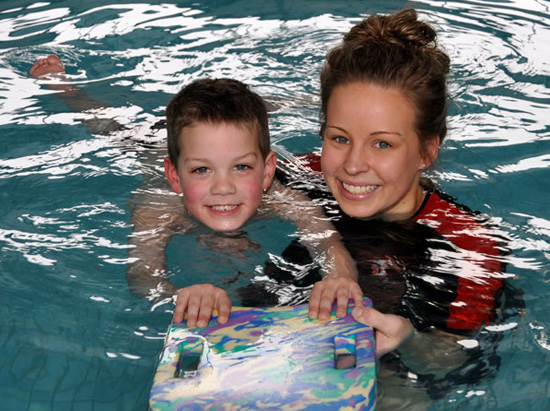 What’s best for my child?
What’s best for my child?
"A brief history"
Before the 1980’s very few floatation aids were used in learn to swim programs within Australia.
From the late 1980’s through to the late 1990’s floatation aids were used frequently within Learn to Swim programs. From the mid 2000’s Learn to Swim Programs started to steer away from floatation aids towards swimming totally unaided.
What should we be doing this year?
"How do children learn to swim?"
Swimmers learn to swim fastest by practicing swimming skills regularly in an environment that continually tests and extends their skills. Swimmers need to be comfortable in their swimming environment and they need to trust their instructor. If swimmers are too complacent or comfortable, then they will become lazy and won’t push or extend themselves. If swimmers are placed in stressful situation, then they will not be able to learn effectively.
"Using No Floatation Aids"
Swimmers are able to get a better and more realistic feel of the water and they are able to swim in a more natural body position in the water. This then enables swimmers to develop their stroke technique in a natural way. One of the down sides of teaching children to swim without aids is that in the early stages of learning to swim children need to have support in their swimming as they have limited to no skills.
This then means that a teacher will need to be very hands on with the children and take them out individually for every practice. This is a very slow process with 5 swimmers in the class. Swimmers then are establishing good skills, but they aren’t getting enough practice at the drills to learn quickly. If the teacher allows a novice swimmer to swim unaided without the teacher assisting them, then the child is left in not only a dangerous situation, but it is also a very stressful situation for the child.
A stressed child will go into “fight or flight mode” which is where they are not thinking about the actions they are performing, but they are doing whatever it takes to get to a point of safety. A child with this stress level will not be listening or learning within the class as they are too busy concentrating on surviving. The child may also have natural reactions to the stress such as crying, withdrawing from the teacher or not wanting to attend swimming lessons. A little bit of stress is a useful thing to help children progress, but it is a fine line between a little bit of stress and survival mode.
"Using Floatation Aids"
Swimmers are able to swim in a relaxed and comfortable environment. Swimmers are able to concentrate more on the skills that are being taught and they are able to practice great stroke technique and independent movement in the water from a very early age. One of the down sides is that the children have added buoyancy and they aren’t swimming in a natural position in the water. Children may also become lazy and reliant on the aids.
"So Which Is Best?"
Neither way is an effective method of learning to swim in isolation of the other.
Too many floatation aids cause laziness, swimming unaided is slow and stressful for the kids. From a parents point of view we would all love our kids to learn to swim in a relaxed comfortable environment where the kids get a lot of swimming practice, but they are also swimming without aids to establish a natural body position in the water while also being tested and extended every week without excessive stress.
"What do we do at SSA?"
We opened in September, 2001. At the time we used a learn to swim system that was based around a lot of floatation aid use. In July of 2008 we established the Swim and Survival Academy with the sole purpose of providing the best learn to swim program in the world. We designed our program not only based on years of experience, but also on the best ideas from the numerous international, national and state learn to swim and competitive swimming conferences that management and staff have attended.
Over the last five years we have progressively changed our programs from the previous more “floatation aid” based system to one that is now a fine balance between swimming aided and unaided. We are constantly reassessing and tweaking our program so that we can achieve the following:- “We would all love our kids to learn to swim in a relaxed comfortable environment where the kids get a lot of swimming practice, but they are also swimming without aids to establish a natural body position in the water while also being tested and extended every week without excessive stress.”
We thank our parents for their feedback and support over the years in helping us to develop what we believe is the best learn to swim program available.


